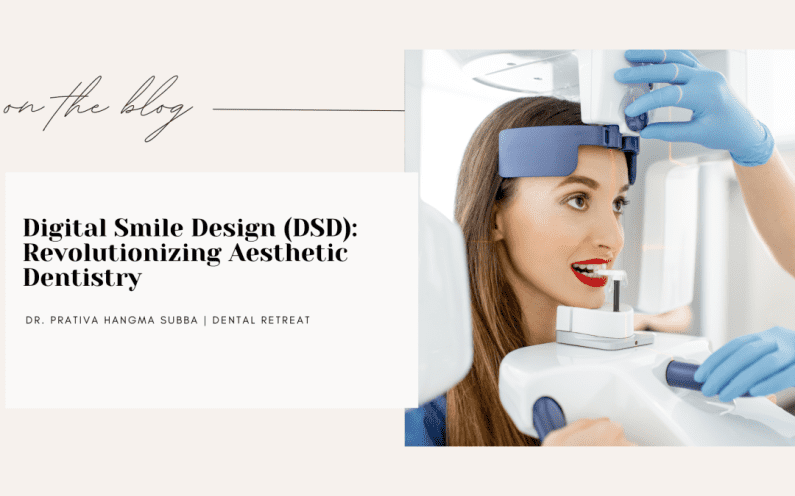Introduction
Digital Smile Design (DSD) is transforming the landscape of cosmetic dentistry by merging technology, artistry, and functionality. This cutting-edge approach enables dentists to visualize and plan a patient’s smile makeover digitally, ensuring precise, predictable, and aesthetic results.
In this comprehensive guide, we’ll delve into what DSD entails, how it works, its applications, and why it’s becoming the gold standard in smile design. We’ll also connect DSD to related Minimally Invasive Dentistry techniques like ICON Resin Infiltration, Laser Dentistry, and Silver Diamine Fluoride (SDF) for holistic patient care.
What Is Digital Smile Design (DSD)?
DSD is a conceptual and diagnostic tool that allows dentists to create a digital blueprint of a patient’s ideal smile. Using advanced software, photographs, videos, and 3D imaging, dentists can design a smile that harmonizes with the patient’s facial features, personality, and functional needs.
How Digital Smile Design Works
Step 1: Digital Analysis
The process begins with a thorough analysis of the patient’s oral and facial anatomy using high-resolution photos, videos, and 3D scans.
Step 2: Smile Simulation
Using specialized software, the dentist creates a virtual mock-up of the patient’s new smile. This step allows for visualizing the final result before any procedure begins.
Step 3: Patient Involvement
DSD emphasizes collaboration. Patients can actively participate in the design process, providing feedback and approving the proposed changes.
Step 4: Treatment Planning
Once the design is finalized, the dentist develops a detailed treatment plan, which may involve multiple procedures such as teeth whitening, veneers, orthodontics, or ICON Resin Infiltration for early cavity treatment.
Step 5: Execution
The final step involves implementing the plan with precision, using digital guides and templates to ensure the best results.
Applications of Digital Smile Design
1. Smile Makeovers
DSD is ideal for patients seeking a complete transformation, addressing issues like discoloration, misalignment, or uneven teeth.
2. Restorative Dentistry
DSD enhances the aesthetic outcomes of treatments like crowns, bridges, and implants by ensuring they blend seamlessly with the patient’s natural teeth.
3. Orthodontics
By integrating DSD, orthodontic treatments can be planned with an emphasis on both function and aesthetics.
4. Minimally Invasive Procedures
When combined with Minimally Invasive Techniques such as ICON Resin Infiltration or Laser Dentistry, DSD ensures conservative yet effective outcomes.
5. Patient Education and Motivation
The ability to visualize potential results motivates patients to pursue treatment and builds trust in their dentist’s expertise.
Benefits of Digital Smile Design
- Enhanced Precision:
- Ensures accurate planning and execution by leveraging advanced imaging and simulation tools.
- Patient-Centric Approach:
- Involves patients in the design process, ensuring their preferences are prioritized.
- Improved Aesthetics:
- Creates smiles that are harmonious with facial features and personality traits.
- Minimized Errors:
- Digital workflows reduce the risk of miscommunication or inaccuracies during treatment.
- Predictable Outcomes:
- Patients can preview their results, eliminating uncertainties.
- Integrative Treatment Planning:
- Combines aesthetics with functional needs for comprehensive care.
Limitations of Digital Smile Design
- Cost:
- DSD can be more expensive due to the advanced technology and time involved.
- Learning Curve:
- Dentists must be well-trained in DSD software and techniques to maximize its potential.
- Time-Consuming Initial Setup:
- Collecting and analyzing data for DSD requires time and precision.
- Not Always Necessary:
- DSD is best suited for complex cases; simpler aesthetic concerns may not require this advanced approach.
Digital Smile Design vs. Traditional Smile Design
| Feature | Digital Smile Design | Traditional Smile Design |
|---|---|---|
| Precision | High; uses digital tools for accuracy | Relies on manual assessments |
| Patient Involvement | Interactive and collaborative | Limited patient input |
| Time Efficiency | Faster with digital workflows | Slower due to manual processes |
| Predictability | Results are visualized before treatment | Outcomes are less predictable |
Integration of Digital Smile Design with Other Techniques
1. ICON Resin Infiltration and DSD
For patients with white spots or minor enamel defects, ICON Resin Infiltration can be seamlessly incorporated into the DSD workflow to enhance aesthetics without drilling.
2. Laser Dentistry and DSD
Laser Dentistry complements DSD by enabling precise gum contouring and soft tissue management for an ideal smile line.
3. SDF and DSD
Silver Diamine Fluoride (SDF) can be used alongside DSD for patients with high caries risk, preserving tooth structure before initiating aesthetic treatments.
Also read our blog on Minimally Invasive Dental Implants: The Future of Tooth Replacement
Technological Innovations in DSD
- 3D Printing:
- Enables the creation of physical mock-ups and templates for guided procedures.
- AI-Powered Software:
- AI enhances DSD workflows by automating data analysis and improving treatment accuracy.
- Virtual Reality (VR):
- Offers patients an immersive preview of their new smile in real-time.
- Teledentistry:
- Combines DSD with remote consultations, expanding access to advanced care.
Future Trends in Digital Smile Design
- Increased Accessibility:
- Innovations are making DSD more affordable and widespread.
- Biomimetic Materials:
- Development of materials that mimic natural teeth for even better aesthetic outcomes.
- Personalized Care:
- Advances in data analysis will enable hyper-personalized smile designs.
Also read our blog on Preventive Sealants: Shielding Smiles from Cavities
Why Choose Digital Smile Design?
Digital Smile Design is more than just a cosmetic solution—it’s a holistic approach that integrates aesthetics, functionality, and patient satisfaction. Whether combined with minimally invasive treatments like Laser Dentistry or restorative solutions like veneers and implants, DSD ensures exceptional results tailored to each patient.
Also read our blog on Ultra-Thin Veneers: Transforming Smiles with Minimal Intervention
Conclusion
Digital Smile Design represents the pinnacle of modern aesthetic dentistry, offering unparalleled precision, patient engagement, and predictability. By combining advanced technology with artistic expertise, DSD delivers stunning smiles that are as functional as they are beautiful.
To learn more about cutting-edge dental treatments, visit our Blog on Minimally Invasive Dentistry and explore other innovative techniques like Air Abrasion Dentistry and Silver Diamine Fluoride (SDF).

